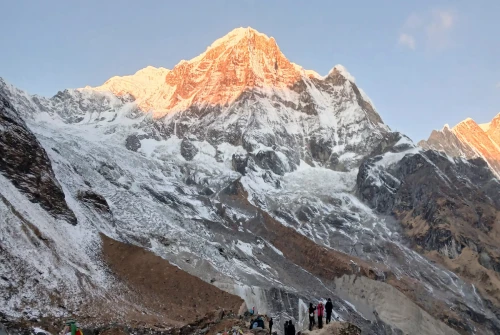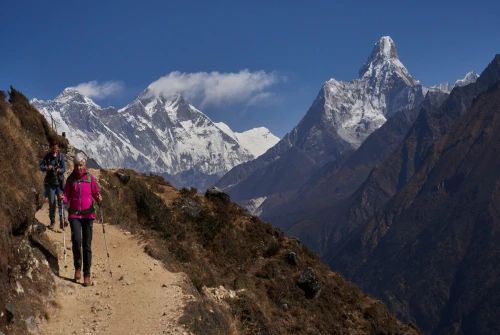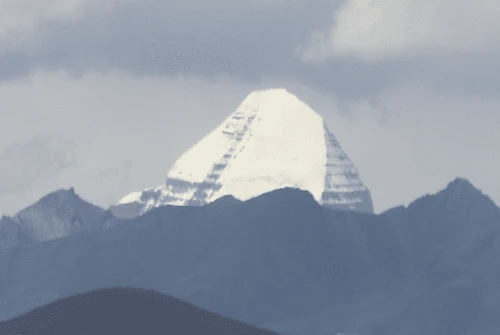The Trekking Agencies Association of Nepal (TAAN) and Nepal Tourism Board (NTB) jointly implemented the Trekkers' Information Management System (TIMS) to ensure the safety and security of trekkers and regulate trekking operations.
The Trekker's Information Management System (TIMS) was implemented on January 1, 2008, as a collaboration between the Trekking Agencies Association of Nepal (TAAN) and the Nepal Tourism Board (NTB). The primary purpose of TIMS is to regulate and control illegal trekking operations and ensure the overall safety and security of trekkers in popular trekking areas. It achieves this through a prompt information service mechanism.
Every trekker planning to trek in Nepal is required to obtain a TIMS Card. These cards can be obtained from government-registered trekking companies, as well as from the offices of TAAN and NTB. The TIMS Card contains detailed information about the trekker, including personal details, the chosen trekking area, trekking routes, handling agencies, and duration of the trek. The data generated by the TIMS system serves as a valuable resource for various stakeholders such as tourism organizations, government agencies, diplomatic missions, tour operators, and research institutes.
How and where to obtain a TIMS Card?
- Free Individual Trekkers (FITs) can obtain TIMS cards at the offices of Nepal Tourism Board (NTB) in Kathmandu and Pokhara, as well as at the TAAN Secretariat in Maligaon and TAAN Pokhara Secretariat in Pokhara. They need to fill out the TIMS application form to obtain the card.
- Organized trekkers who are part of a trekking company can provide their trekking details to the company, which will then enter the information into the central database. The trekking company will issue the TIMS card to the trekkers after they pay the prescribed fee.
Opening hours:
- The TIMS counter at TAAN follows regular working hours from 10 am to 5 pm and operates 365 days a year.
- NTB offices follow the regular working hours and days of the government.
- Trekking agencies are open 12 hours a day, seven days a week.
Documents required To Obtain TIMS:
To obtain a TIMS Card, you need to provide copies of the following documents:
- Passport
- Two (2) passport-size photographs
Importance of TIMS: TIMS is necessary for the following reasons:
TIMS not required for:
- Expedition members with permission to climb mountains
- Visitors in controlled areas with permits from the Department of Immigration
- Foreign guests invited by the Government of Nepal
- Authorities from diplomatic missions with official letters traveling at their own risk
- Visitors on specific missions recommended by the concerned government department(s)
- Foreign nationals with a residential visa
Distribution of TIMS card revenue
The revenue collected from the distribution of TIMS cards is divided into three equal parts for the following purposes:
- Nepal Tourism Board (NTB) utilizes the first part for printing TIMS cards, holograms, and managing issuing counters, and the remaining amount is used for tourism marketing, publicity, and promotion.
- The second part is used for the welfare of trekking workers, such as purchasing medical and accident insurance policies for them and conducting rescue operations in case of accidents. It is also utilized for corporate social responsibility (CSR) programs and administrative expenses.
- The third part is allocated for the development of infrastructure, promotion, conservation, and maintenance of trekking trails. It is also used to explore, develop, and promote new destinations, as well as organize training and workshops for sustainable and responsible tourism development.
Trekking guides and TIMS Cards are required on the majority of trekking routes in the Himalayas.
According to the Revised TIMS Provision effective from March 31, 2023, certain Protected Areas in Nepal have specific requirements for trekkers. In these areas, trekkers are required to be accompanied by a licensed trekking guide and carry a TIMS Card issued by a trekking agency. The rule applies to the following trekking regions and routes
| Trekking Region | Name of the Trek |
| Kanchenjunga Region | 1. Kanchenjunga Base Camp via Sele La Pass Trek
2. Kanchenjunga Basecamp Trek
3. Kanchenjunga Base Camp Nango Pass Trek
4. Lumba Sumba Pass Trek
|
| Makalu Barun Area | 1. Makalu Basecamp Trek
2. Sherpeni Cole Pass Trek |
| Everest Region | 1. Everest Basecamp Trek
2. Gokyo Trek
3. Chho La Pass Trek
4. Gokyo Renjo La Pass Trek
5. Three Passes Trek
6. Everest View trek
7. Mera Peak Trek
8. Amphu Labtsha Pass |
| Rolwaling Region | 1. Rolwaling Trek
2. Tashi Labtsha Pass Trek |
| Panchpokhari Bhairabkunda Area | Panchpokhari Trek |
| Helambu Region | 1. Helambu Trek
2. Goshaikunda Trek |
| Langtang Region | 1. Langtang Trek
2. Langtang Gosaikund Trek
3. Tamang Heritage Trek
4. Tamang Heritage Langtang Trek
5. Ganja La pass Trek
6. Till Man Pass |
| Ganesh Himal-Ruby Valley Area | Ganesh Himal - Ruby Valley Trek |
| Manaslu Region | 1. Manaslu Circuit Trek
2. Manaslu - Tsum Valley Trek
3. Tsum Valley Trek |
| Annapurna Region | 1. Annapurna Circuit Trek
2. Nar Phu Annapurna Circuit Trek
3. Mesokanto / Tilicho Pass Trek
4. Poon Hill-ABC Trek
5. Khopra Trek
6. Mardi Himal Trek
7. Sikleh Tara Hill Trek |
| Mustang Region | 1. Upper Mustang Trek
2. Sarebung Pass Trek
|
| Dhaulagiri Region | Round Dhaulagiri |
| Dolpo Region | 1. Upper Dolpo - Jomsom Trek
2. Upper Dolpo Trek
3. Lower Dolpo Trek
4. Kagmara Pass Trek |
| Humla Region | Humla Limi Valley Trek |
To ensure compliance with the requirements of trekking routes in Nepal, prospective trekkers need to determine whether their chosen route necessitates a trekking guide and TIMS Card. If these are indeed required, it is recommended to contact a registered trekking agency authorized by the government to make arrangements for a trekking guide and obtain the TIMS Card accordingly.
The system applies to all trekking areas in Nepal, including restricted areas. Group trekkers are required to obtain Blue TIMS cards by paying a fee of Rs 1,000 per person, while FITs need to acquire Green TIMS cards by paying a fee of Rs 2,000. For trekkers from SAARC countries, group trekkers pay Rs 300, and FITs pay Rs 600 each for TIMS cars.
Overall, TIMS serves as a record-keeping system to enhance the efficiency of rescue operations and ensure the safety of trekkers in Nepal's trekking areas.
![Trekkers' Information Management System [TIMS]](https://media.allnepalhiking.com/uploads/fullbanner/best-trek-for-biginner-2.webp)



